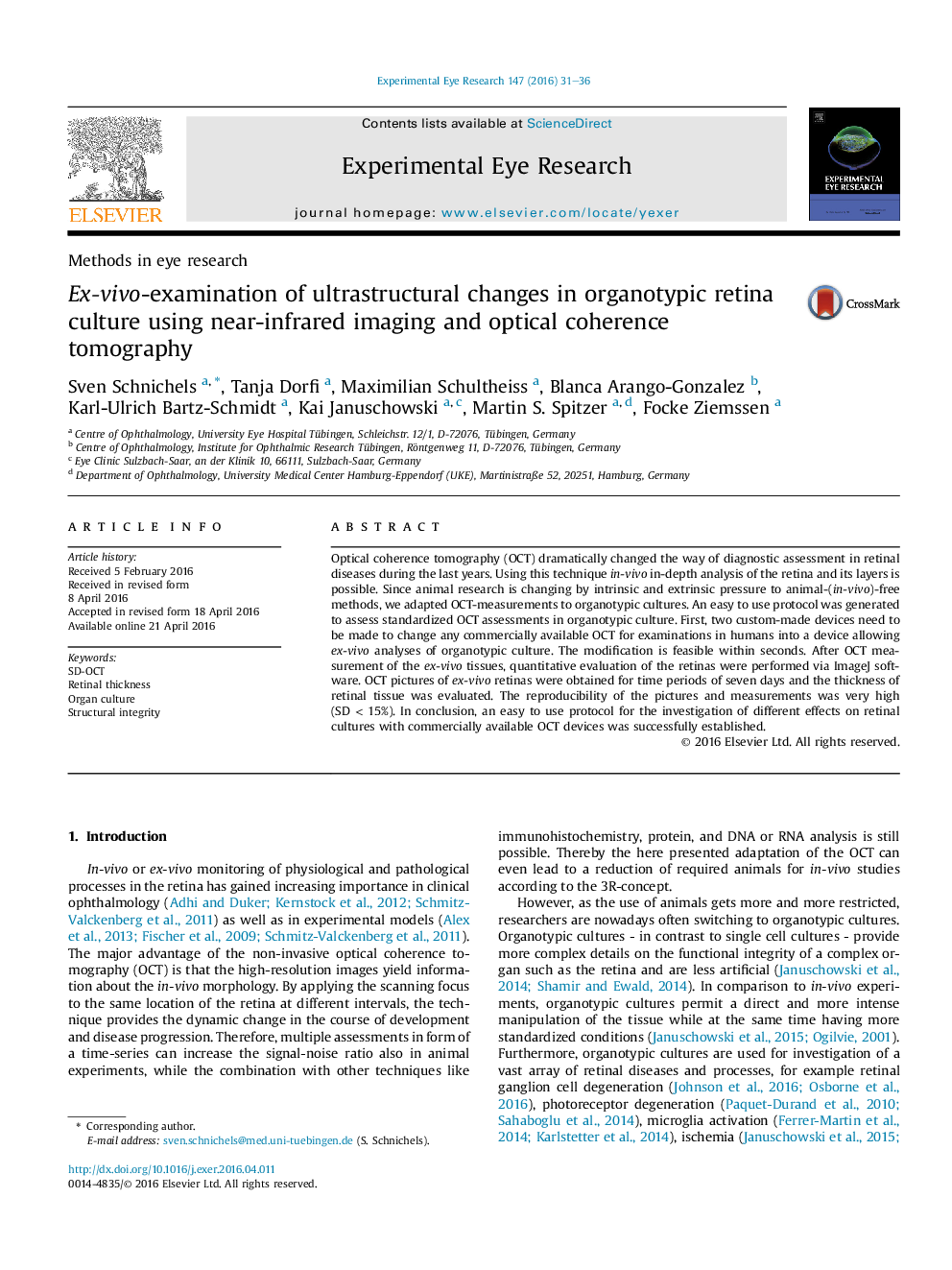| Article ID | Journal | Published Year | Pages | File Type |
|---|---|---|---|---|
| 6196248 | Experimental Eye Research | 2016 | 6 Pages |
â¢OCT-measurements were adapted to organotypic cultures.â¢in-vitro in-depth analysis of the retina and its layers are possible.â¢an easy to use protocol with commercially available OCT devices is given.â¢Animal experiments can be reduced with this technique.
Optical coherence tomography (OCT) dramatically changed the way of diagnostic assessment in retinal diseases during the last years. Using this technique in-vivo in-depth analysis of the retina and its layers is possible. Since animal research is changing by intrinsic and extrinsic pressure to animal-(in-vivo)-free methods, we adapted OCT-measurements to organotypic cultures. An easy to use protocol was generated to assess standardized OCT assessments in organotypic culture. First, two custom-made devices need to be made to change any commercially available OCT for examinations in humans into a device allowing ex-vivo analyses of organotypic culture. The modification is feasible within seconds. After OCT measurement of the ex-vivo tissues, quantitative evaluation of the retinas were performed via ImageJ software. OCT pictures of ex-vivo retinas were obtained for time periods of seven days and the thickness of retinal tissue was evaluated. The reproducibility of the pictures and measurements was very high (SDÂ <Â 15%). In conclusion, an easy to use protocol for the investigation of different effects on retinal cultures with commercially available OCT devices was successfully established.
